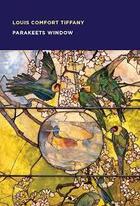Résumé:
How design made America modern: masterpieces of furniture, metalware and plastics from the early 20th century.
During the 1920s and 1930s, the speed of modern life in the United States, accelerated by advances in transportation, communication, technology and advertising, changed how people... Voir plus
How design made America modern: masterpieces of furniture, metalware and plastics from the early 20th century.
During the 1920s and 1930s, the speed of modern life in the United States, accelerated by advances in transportation, communication, technology and advertising, changed how people lived their lives, and the objects they chose to live with. A new profession emerged to help American manufacturers and consumers navigate the overwhelming transitions of the era. Through the power of design--form, color, ornament and materials--the earliest industrial designers created a modern aesthetic that came to represent American hopes, dreams and fantasies.
America Goes Modern explores these designers' achievements through close examination of selected masterworks. Each of these exceptional objects offers a window into the social, cultural, technological and economic world in which they were made and used. The book features sleek furniture, vibrant ceramics, streamlined metalwares and innovative plastics from the leading designers of the era.
Designers include: Norman Bel Geddes, Manning Bowman Company, Jules Buoy, Donald Deskey, Paul Frankl, Earl Harvey, Ianelli Studios, Belle Kogan, William Lescaze, Erik Magnussen, Peter Muller Munk, Gilbert Rhode, RumRill Art Pottery, Victor Schreckengost, Walter Dorwin Teague, The Hall China Company, Harold Van Doren, John Vassos, Kem Weber, Western Coil and Electric Company and Russel Wright.
Photographers and painters include: Berenice Abbott, Arthur Dove, Archibald Motley, Alvin Langdon Coburn, M. Murray Lebowitz, Norman Lewis, Max Weber, Margaret Bourke-White, Henry Callahan and Alfred Stieglitz















